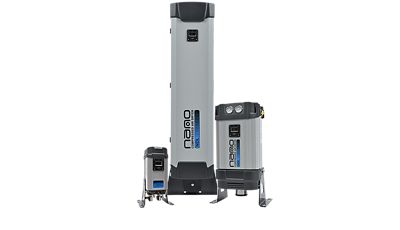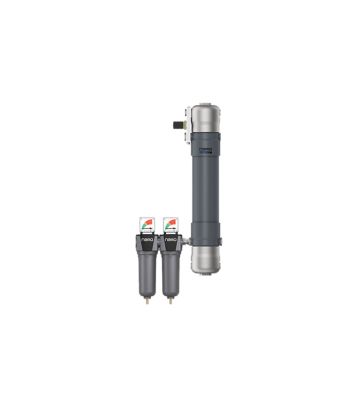The cold season is approaching rapidly, bringing with it a host of challenges related to compressed air. Many industries use compressed air for outdoor applications or in buildings with little to no heating.
The decrease in temperature of untreated compressed air leads to condensation forming in the air lines. This condensation can freeze in the cold, resulting in ice plugs, clogged filters, hindered movement of cylinders or actuators, valve seizing, pipe breakage, and more.
Identification: Firstly, it's necessary to compile a list of applications in the facility that require proper treatment. The most common applications include:
• Piping that runs outside the building or in non-heated areas.
• Dust collectors installed outdoors that require pulsating air to function properly.
• Valve actuators installed outdoors.
• Pneumatic cylinders in non-heated areas.
• Pneumatic hoists or tools used outdoors during winter.
• Sandblasting with compressed air outdoors.
Validation: Next, the air needs of different applications need to be validated. Some demands may be sporadic, while others are continuous. Equipment manufacturers can usually assist in assessing the consumption of provided equipment. Compressed air specialists often offer their services to estimate this demand.
Selection: This is where, based on information gathered during validation, one can work on selecting an air dryer capable of supplying adequate air for each application. Your compressed air specialist can assist you by proposing the necessary equipment to meet your needs.
• Desiccant dryer: A desiccant dryer typically provides a dew point of -40°F. This means that the temperature inside the pipe must be below -40°F before condensation forms. This covers the majority of applications, and even below -40°F, the amount of water present in the air is minimal. nano-purification solutions offers a complete range (D1, D2, and D3 series) of modular desiccant dryers that allow for compact installation at the point of use, and sometimes even wall-mounted.


Installation: Once the selection is made, installing the equipment remains. Here are some points to discuss with your compressed air equipment supplier:
• Location: It's important to choose a location close to the application while ensuring the equipment's safety. It may be necessary to install protection equipment to prevent damage near areas with heavy forklift traffic. Wall installation can be advantageous to limit floor space usage. The D1 and D2 series can all be installed on walls.
• Bypass: Installing isolation valves and a bypass line is useful, as the dryer may not be needed during warmer periods in spring, summer, and autumn. The line and valves allow the dryer to be isolated and closed, reducing unnecessary compressed air energy consumption. Air already treated by a central refrigerated dryer in the plant is typically sufficient for warmer periods.
• Buffer tank: Some applications, such as dust collectors, require large amounts of sporadic compressed air. These demands can lead to overloads or pulsations at the dryer. Using a dry buffer tank after the dryer helps alleviate these variations. The modular dryer series D1, D2, and D3 from nano-purification solutions are filled using the "Snow Storm" system, significantly reducing attrition wear caused by these variations, unlike traditionally filled dryers.
• Electricity: A power source must be provided to supply standard desiccant dryers. However, a 115V/1Ph/60Hz outlet with a capacity of 15 amperes is generally sufficient. Desiccant dryers in the D2 and D3 series with pneumatic operation, as well as membrane dryers, do not require electrical connections.
Maintenance: Finally, it's important to include maintenance time in the plant's schedule for maintenance and, if necessary, startup (if the equipment is shut down during warm periods). The best time to perform this maintenance is typically in September or October to be prepared for the winter.
In conclusion, taking preventive measures to address the impending arrival of the cold season and its implications for compressed air systems is crucial. The precise identification of air treatment needs is the first step. Air dryers, whether desiccant or membrane, offer effective solutions to avoid these problems and ensure smooth operation.
Carefully selecting and installing dryers, in collaboration with compressed air experts, optimizes their efficiency. Regular maintenance, ideally carried out before winter, ensures uninterrupted operations.
By adopting a proactive approach and using nano-purification solutions' solutions, industries can overcome compressed air challenges in winter, ensuring continuous and efficient production.


